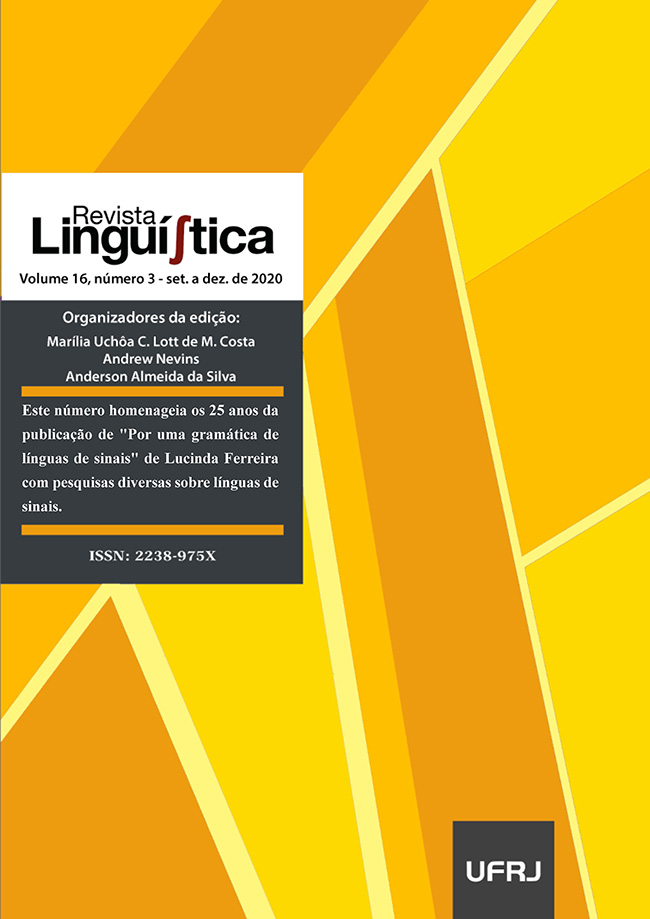Spatial verbs are demonstration verbs
DOI:
https://doi.org/10.31513/linguistica.2020.v16n3a36966Keywords:
spatial verbs, agreement, demonstration, null subjects, German Sign Language.Abstract
The literature has been divided over the question of whether spatial verbs should be subsumed into a single verb class with agreement verbs. The main point of contention has been that, even if the nature of the elements that these verb types agree with differs, the morphosyntactic mechanism, i.e. a path movement, appears to be the same. Contributing to this debate, this corpus-based study scrutinizes the morphosyntactic properties of a set of spatial verbs in German Sign Language (DGS). It is shown that spatial verbs display striking variability in where they begin and end their movement in space. They may align with locations or person loci, but often they simply mark arbitrary locations, which may convey meaningful yet less specific information about the (direction of) movement of a referent relative to the signer. Furthermore, null subjects are found to occur remarkably often in constructions with spatial verbs, despite the absence of systematic subject marking on the verb itself. These results stand in contrast with those reported for regular agreement verbs in DGS (OOMEN, 2020), and thus provide support for a distinction between the two types. It is proposed that spatial verbs in DGS involve a demonstration component (cf. DAVIDSON, 2015) which ensures the recoverability of referents involved in the event denoted by the verb, thus loosening the restrictions on both agreement marking and subject drop that apply to regular agreement verbs. As such, spatial verbs are argued to be somewhere in between conventionalized lexical verbs and classifier predicates.
---
Original in English.
Downloads
Published
Issue
Section
License
Authors who publish in the Revista Linguí∫tica agree with the following terms:
The authors maintain their rights, ceding to the journal the right to first publication of the article, simultaneously submitted to a Creative Commons license permitting the sharing with third-parties of published content as long as it mentions the author and its first publication in the Revista Linguí∫tica.
Authors may enter into additional agreements for the non-exclusive distribution of their published work (for example, posting in online institutional or non-profit repositories, or book chapters) so long as they acknowledge its initial publication in the Revista Linguí∫tica.

The journal Revista Linguí∫tica is published by the Post-Graduate program in Linguistics of UFRJ and employs a Creative Commons - Attribution-NonCommercial 4.0 International (CC-BY-NC).









